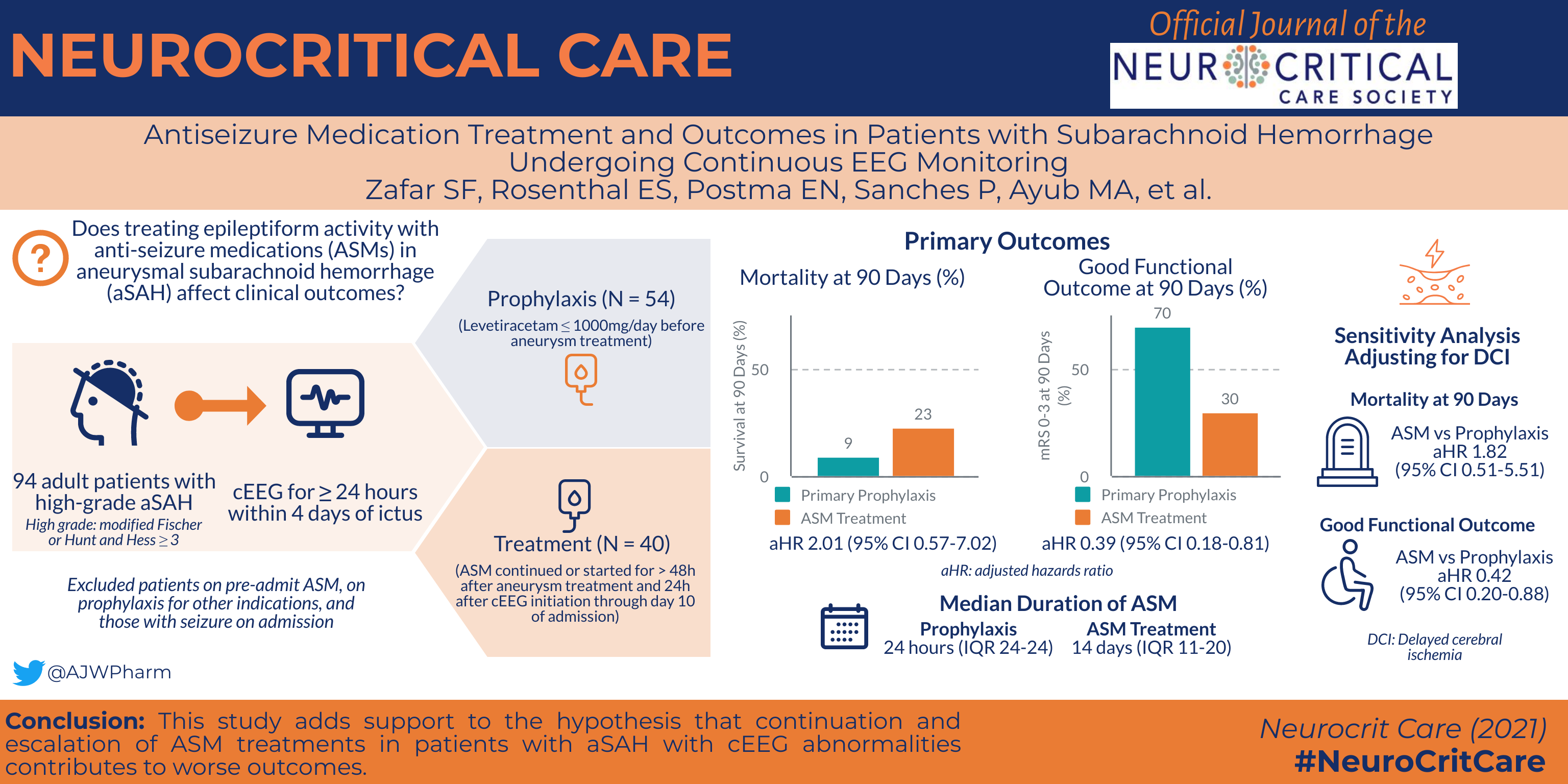By: Sahar F. Zafar, Eric S. Rosenthal, Eva N. Postma, Paula Sanches, Muhammad Abubakar Ayub, Subapriya Rajan, Jennifer A. Kim, Daniel B. Rubin, Hang Lee, Aman B. Patel, John Hsu, Elisabetta Patorno & M. Brandon Westover
Published: 29 November 2021

Background
Patients with aneurysmal subarachnoid hemorrhage (aSAH) with electroencephalographic epileptiform activity (seizures, periodic and rhythmic patterns, and sporadic discharges) are frequently treated with antiseizure medications (ASMs). However, the safety and effectiveness of ASM treatment for epileptiform activity has not been established. We used observational data to investigate the effectiveness of ASM treatment in patients with aSAH undergoing continuous electroencephalography (cEEG) to develop a causal hypothesis for testing in prospective trials.
Methods
This was a retrospective single-center cohort study of patients with aSAH admitted between 2011 and 2016. Patients underwent ≥ 24 h of cEEG within 4 days of admission. All patients received primarySave ASM prophylaxis until aneurysm treatment (typically within 24 h of admission). Treatment exposure was defined as reinitiation of ASMs after aneurysm treatment and cEEG initiation. We excluded patients with non-cEEG indications for ASMs (e.g., epilepsy, acute symptomatic seizures). Outcomes measures were 90-day mortality and good functional outcome (modified Rankin Scale scores 0–3). Propensity scores were used to adjust for baseline covariates and disease severity.
Read the full article.